
Kayak fishing is fast becoming one of Australia’s most accessible and rewarding ways to explore our coastal and inland waters. Whether you’re chasing flathead across the sandflats or stalking bream in sheltered estuaries, the right gear makes all the difference. In this guide, we’ll break down the top essentials every kayak angler should bring along — with a focus on safety, storage, and gear that holds up in Australian conditions. If you’re wondering what you need to start kayak fishing, or just want to upgrade your setup, this list is for you.
Your kayak is your fishing platform – get it right and everything else gets easier.
Sit-On-Top Kayaks (SOT)
These are by far the most popular choice for kayak fishing — and for good reason.
Pros:
Cons:
These are more traditional kayaks with a cockpit you sit inside.
Pros:
Cons:
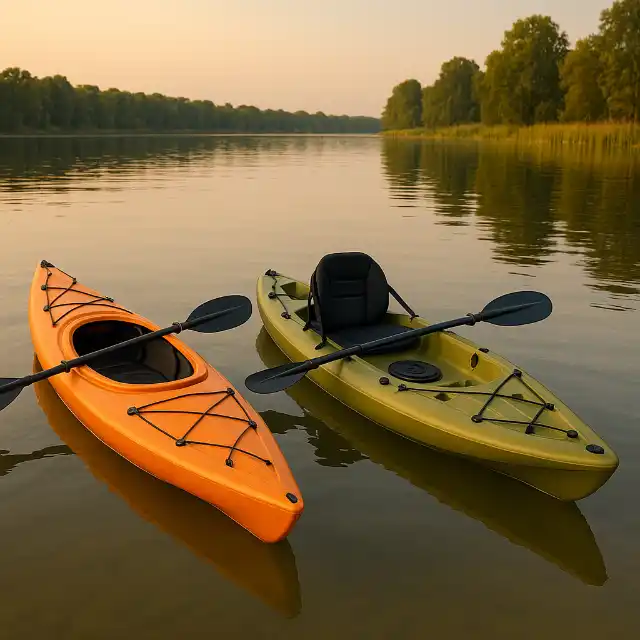
For most Aussie anglers — especially beginners — a sit-on-top kayak is the better all-around choice. They’re more versatile, easier to rig for fishing, and far safer if you happen to go overboard.
But if you’re fishing in colder southern climates or on still freshwater lakes, a sit-in kayak might offer just enough protection and efficiency to make it worth considering.
BCF and Anaconda are two popular places to buy new kayaks and equipment from.
Safety isn’t optional when you’re kayak fishing — it’s essential. Conditions can change fast, and having the right gear could be the difference between a close call and a call for help.
🦺 PFD (Personal Flotation Device)
A well-fitted, kayak-specific life jacket is a legal requirement in most Australian states — and it’s designed to move with you as you paddle or cast. Look for models with:
📢 Whistle & Light
These two items are often overlooked — but in many areas, they’re required by law. Use a:
Wind or current can make fishing from a kayak frustrating — or unsafe. Bring a small:
Tip: Always attach anchors and drags via quick-release clips — and never to your wrist or body.
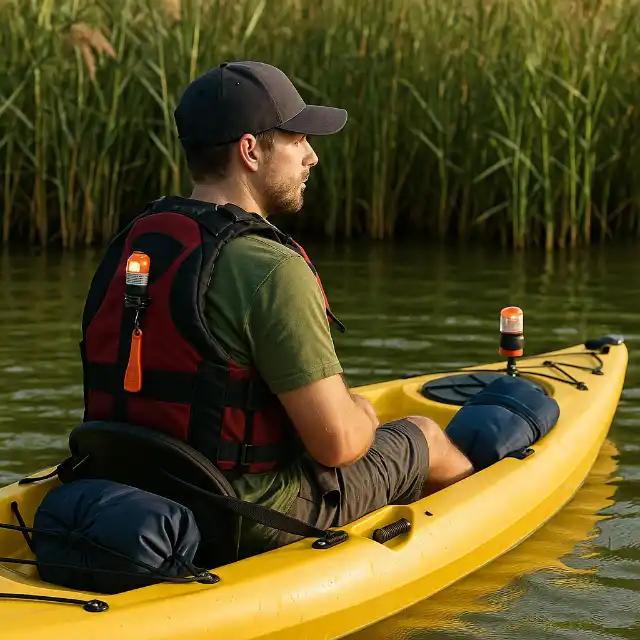
When space is limited and balance matters, every piece of gear should earn its place. The key to kayak fishing success isn’t carrying more — it’s carrying smarter.
A medium-action spinning setup around 6’6”–7’ is ideal for most inshore and estuary conditions. Look for:
Keep it simple and stash only what you’ll realistically use:
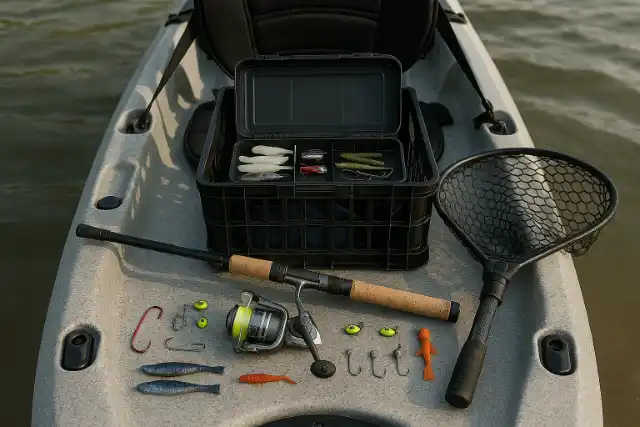
Mounted flush-mount or adjustable rod holders give you hands-free flexibility while trolling, paddling, or re-rigging. Bonus: add a rod leash to prevent accidental losses.
A floating or telescopic net is a game-changer when fishing solo. Look for rubber-coated mesh to avoid hook snags and fish slime buildup.
Tip: Always rinse reels and tools with freshwater after each trip — salt buildup will destroy gear fast.
A smart kayak fishing setup is all about efficiency. The more organised your gear, the less time you spend searching — and the more time you spend casting.
🧺 Milk Crate or Storage Box
The humble milk crate is a kayak angler’s best friend. Add custom PVC rod holders, zip ties, and bungee cords to:
Pro tip: Line the inside with foam or mesh to stop rattling and damage.
Use small-to-medium dry bags to separate and protect your valuables:
Transparent bags with roll-top closures are easy to pack and identify at a glance.
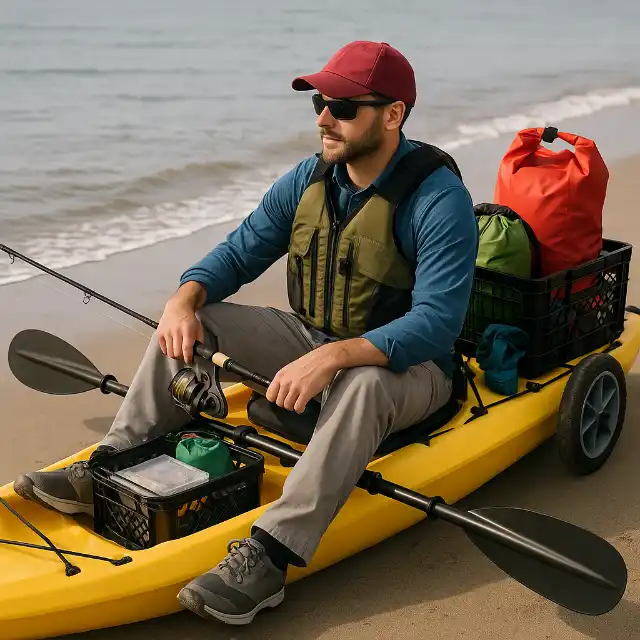
For beach launches, steep banks, or rocky paths, a collapsible kayak trolley makes a world of difference. Look for:
Bonus: Stow the trolley in your crate or behind your seat while fishing.
While not strictly essential, a few well-chosen accessories can take your kayak fishing experience to the next level — helping you find more fish, stay oriented, and capture every moment.
📡 Fish Finder / Sonar
Mounting a compact fish finder gives you a clear edge, especially when fishing new or deep water. Look for:
Tip: Use a transducer arm mount or hull scupper install, depending on your kayak.
Capture your best moments with a waterproof GoPro or Osmo Action:
A secure, waterproof phone mount gives you:
Choose a mount that locks firmly and ideally floats if dislodged.
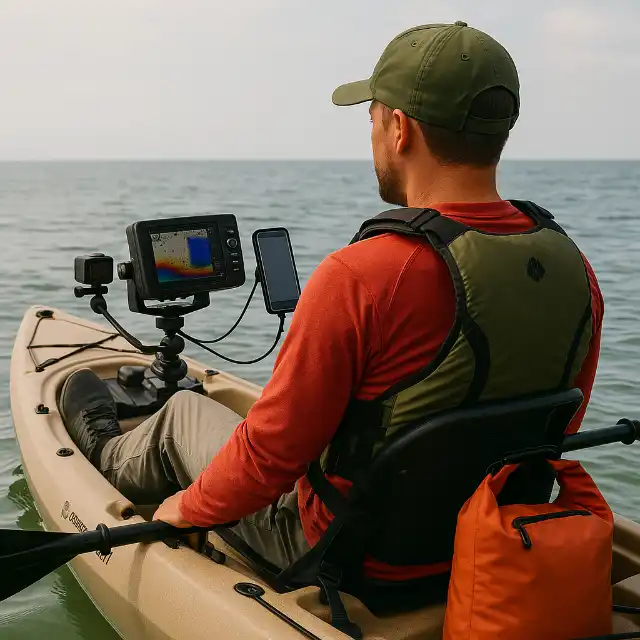
Even the best gear won’t help if you’re fishing the wrong spot at the wrong time — or breaking local rules. A little local knowledge goes a long way toward a safe, successful trip.
In many parts of Australia, a recreational fishing licence is required. Requirements vary by state:
Pro tip: Keep a digital copy of your licence on your phone or printed in a dry bag.
Tide movement directly affects fish behaviour and kayak safety. Always check:
🔗 Scroll down for links to your local tide charts and the Bureau of Meteorology marine weather portal.
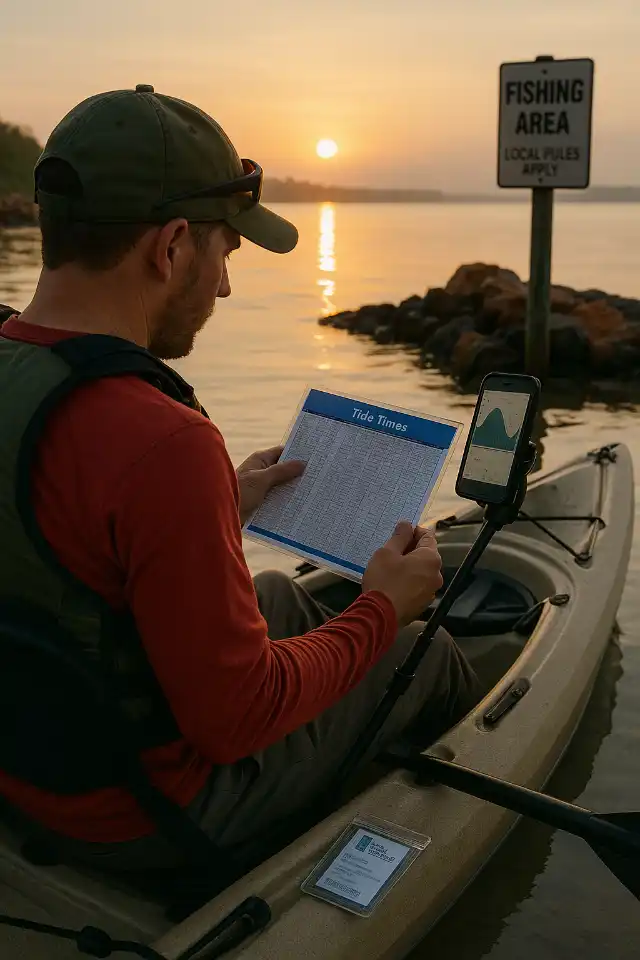
| Item | Beginner Tip | |
|---|---|---|
| ✅ | Kayak | Start stable, not fancy |
| ✅ | PFD | Always wear one |
| ✅ | Paddle + Leash | Length matters |
| ✅ | Rod & Tackle | Start with one rod |
| ⛔ | Anchor | Useful, but not essential everywhere |
| ✅ | Storage Crate | Keep gear organized and within reach |
| ✅ | Safety Items | Carry at least whistle and light |
A successful kayak fishing trip starts with preparation — and having the right essentials on board keeps you safe, efficient, and ready to enjoy every moment on the water. From legally required safety gear like PFDs to clever tools like rod holders and dry storage, each item plays a vital role. Before your next launch, run through this checklist and make sure your setup suits the waters you’ll be fishing. And if you’re just getting started, be sure to check out our full Top 10 Kayak Fishing Mistakes and Top 6 Essentials for Kayak Fishing to get paddling with confidence.
Start small and work your way up. Most gear can be upgraded or added to over time
Also read:


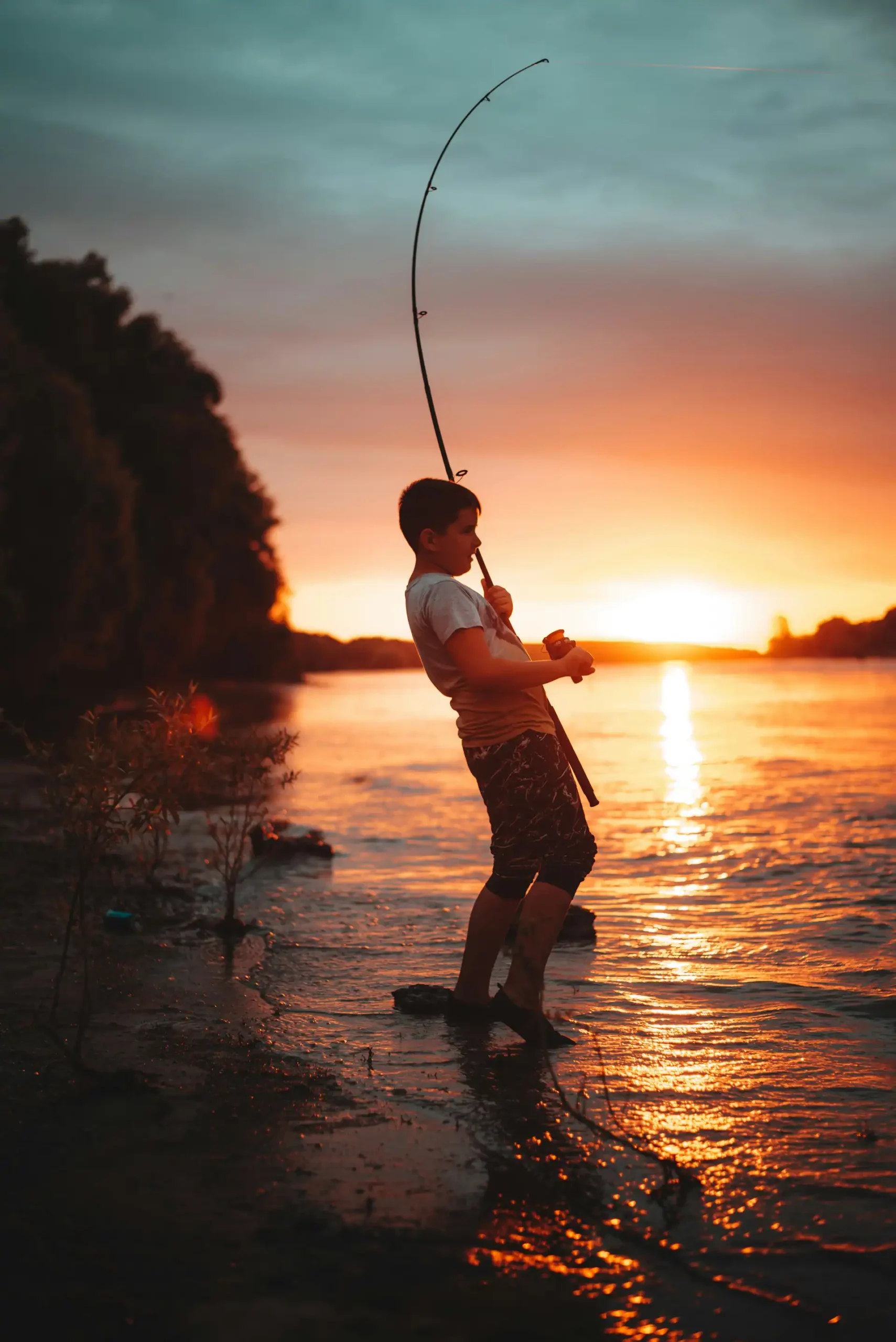
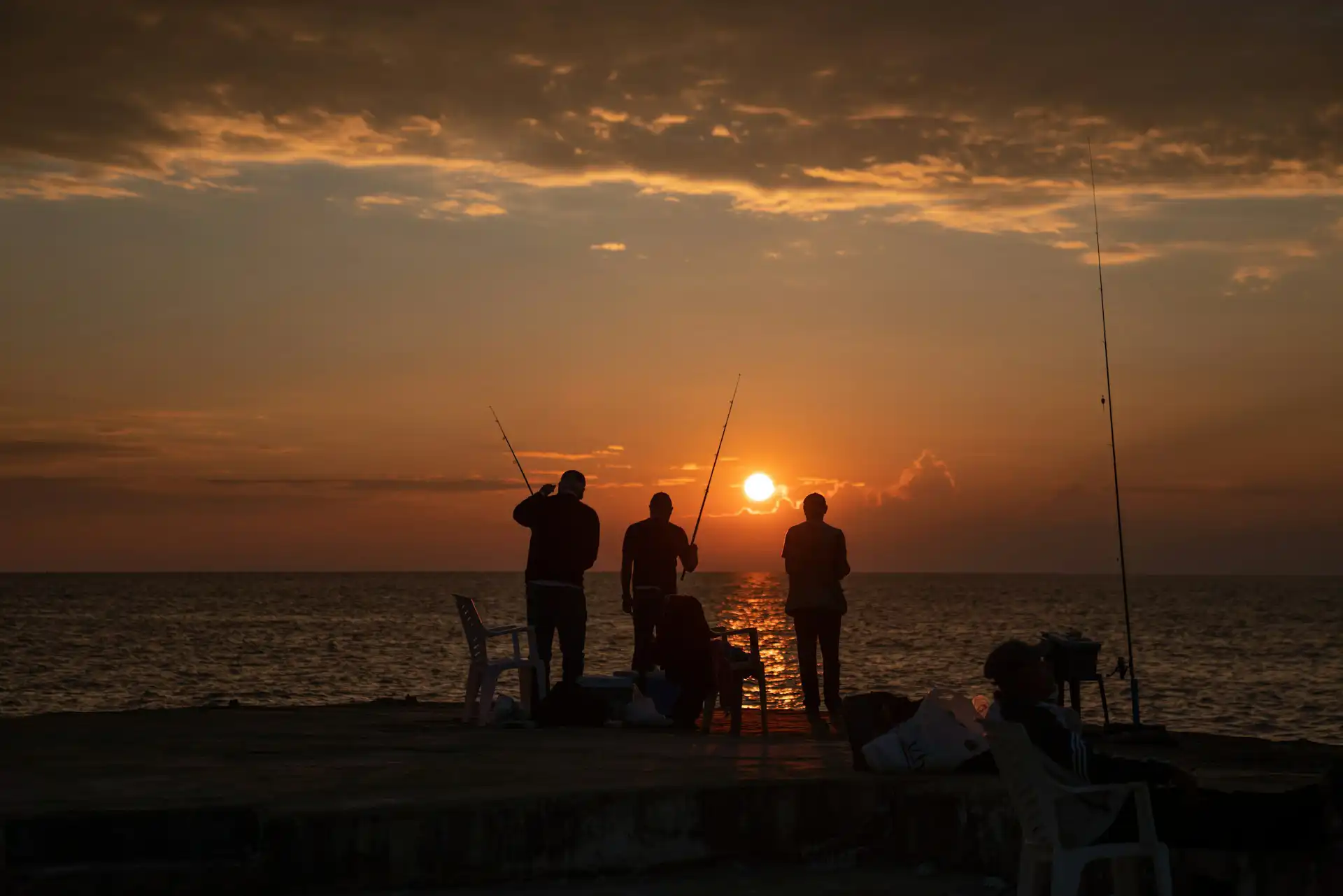

Affiliate Disclosure: We are a participant in the Amazon Services LLC Associates Program, an affiliate advertising program designed to provide a means for sites to earn advertising fees by linking to Amazon.com. As an Amazon Associate, We earn from qualifying purchases. Your support helps us keep this site running—thank you!